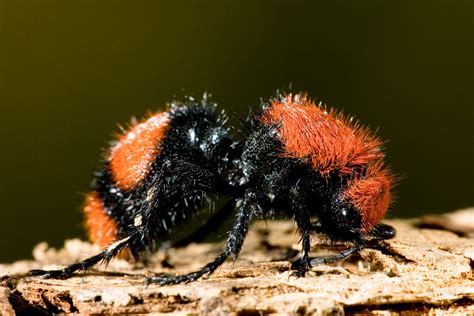
A venomous ant species known as the Asian needle ant, capable of delivering a painful and potentially dangerous sting, is rapidly expanding its territory across several states in the eastern United States, raising concerns among entomologists and public health officials.
The Asian needle ant ( Pachycondyla chinensis ), an invasive species first detected in the U.S. in the 1930s, poses a significant threat due to its aggressive behavior and potent venom. Unlike typical ants that bite and then spray formic acid, Asian needle ants inject venom directly into their victims through a sting, similar to wasps or bees. For most people, the sting results in localized pain, swelling, and itching, which can last for several days. However, for individuals with allergies to insect stings, the venom can trigger a severe allergic reaction, including anaphylaxis, a potentially life-threatening condition.
The range of the Asian needle ant has been steadily increasing over the past few decades. Originally confined to a few southeastern states, including North Carolina, Georgia, and South Carolina, the ant has now been reported in states as far north as New York, Pennsylvania, and Massachusetts, and as far west as Tennessee and Alabama. Experts attribute the ant’s rapid spread to its adaptability to various habitats, including forests, suburban areas, and even urban environments. The ants are also easily transported through human activities, such as the movement of potted plants, mulch, and other landscaping materials.
According to Eleanor Spicer Rice, an entomologist and author of “Dr. Eleanor’s Book of Common Ants,” the Asian needle ant is “a formidable predator” and “can outcompete native ant species.” This ecological dominance can disrupt local ecosystems and have cascading effects on other insect populations and plant communities. Furthermore, the ant’s preference for nesting in damp, shaded areas, such as under rocks, logs, and leaf litter, makes it difficult to control and eradicate.
The Sting and Its Effects
The sting of the Asian needle ant is characterized by an immediate, sharp pain, often described as similar to a bee sting. The pain is followed by localized swelling, redness, and intense itching. These symptoms typically subside within a few days, but in some cases, they can persist for a week or longer.
For individuals with allergies to insect stings, the Asian needle ant sting can be particularly dangerous. Allergic reactions can range from mild symptoms, such as hives and difficulty breathing, to severe anaphylaxis, which can cause a sudden drop in blood pressure, loss of consciousness, and even death. It is estimated that up to 3% of the U.S. population is allergic to insect stings, making the Asian needle ant a potential health threat to millions of people.
“If you are stung by an Asian needle ant and experience symptoms of an allergic reaction, such as difficulty breathing, swelling of the face or throat, or dizziness, seek immediate medical attention,” advises Dr. John Smith, an allergist at the University of North Carolina. “Epinephrine auto-injectors (EpiPens) can be life-saving in these situations.”
Identification and Prevention
Identifying Asian needle ants is crucial for taking appropriate precautions and preventing stings. These ants are relatively small, measuring about ¼ inch in length, and are dark brown to black in color. They have a distinctive needle-like stinger at the end of their abdomen, which is used to inject venom. Asian needle ants also tend to move quickly and erratically, making them easily distinguishable from other ant species.
Preventing Asian needle ant infestations involves several strategies:
- Eliminate standing water: Asian needle ants thrive in damp environments, so eliminating sources of standing water around your home can help deter them.
- Remove leaf litter and debris: These ants often nest under rocks, logs, and leaf litter, so removing these materials from your yard can reduce their habitat.
- Seal cracks and crevices: Seal any cracks or crevices in your home’s foundation and walls to prevent ants from entering.
- Store food properly: Keep food in airtight containers and clean up spills immediately to avoid attracting ants.
- Use insecticidal baits: Insecticidal baits can be effective in controlling Asian needle ant populations. Place baits in areas where ants are known to forage.
- Professional pest control: If you have a severe Asian needle ant infestation, consider hiring a professional pest control company to treat your property.
Ecological Impact
The Asian needle ant’s ecological impact extends beyond its ability to sting humans. As a highly adaptable and aggressive species, it can outcompete native ant species for resources, leading to declines in native ant populations. This can have cascading effects on other organisms that rely on native ants for food or pollination.
“Asian needle ants are voracious predators and can significantly alter the composition of insect communities,” says Dr. David Grinstead, an entomologist at Clemson University. “They prey on a wide range of insects, including other ants, caterpillars, and beetles, which can disrupt food webs and ecosystem processes.”
Furthermore, the Asian needle ant’s preference for nesting in damp, shaded areas can also impact plant communities. By disturbing the soil and leaf litter, they can alter nutrient cycling and water infiltration, which can affect plant growth and survival.
Control and Management Strategies
Controlling and managing Asian needle ant populations is a challenging task, due to their adaptability, aggressive behavior, and preference for nesting in hidden locations. However, several strategies can be employed to reduce their numbers and minimize their impact:
- Habitat modification: Modifying the environment to make it less suitable for Asian needle ants can be an effective long-term control strategy. This includes eliminating standing water, removing leaf litter and debris, and increasing sunlight exposure in shaded areas.
- Insecticidal baits: Insecticidal baits are a targeted approach to control Asian needle ants. Baits contain a slow-acting insecticide that ants carry back to their nests, where it is distributed to other members of the colony. This can lead to the gradual elimination of the entire colony.
- Contact insecticides: Contact insecticides can be used to kill Asian needle ants on contact. However, this approach is less effective than baiting, as it only targets the ants that are directly sprayed and does not eliminate the entire colony.
- Biological control: Biological control involves using natural enemies, such as predators or parasites, to control Asian needle ant populations. However, research on biological control agents for Asian needle ants is still in its early stages.
- Integrated pest management (IPM): IPM is a comprehensive approach to pest control that combines multiple strategies, including habitat modification, baiting, and contact insecticides. IPM aims to minimize the use of pesticides while effectively controlling pest populations.
Research and Monitoring Efforts
Researchers across the United States are actively studying the Asian needle ant to better understand its biology, ecology, and behavior. This research is crucial for developing effective control and management strategies.
“We are conducting research to identify the factors that contribute to the Asian needle ant’s success as an invasive species,” says Dr. Rachel Jones, an entomologist at the University of Georgia. “This includes studying its diet, reproductive behavior, and interactions with other ant species.”
Monitoring efforts are also underway to track the spread of the Asian needle ant and assess its impact on native ecosystems. These efforts involve surveying ant populations in different areas and collecting data on their abundance, distribution, and ecological interactions.
Public Awareness and Education
Raising public awareness about the Asian needle ant and its potential risks is essential for protecting human health and the environment. Educational programs can inform people about how to identify Asian needle ants, prevent infestations, and respond to stings.
“We are working with local communities to educate them about the Asian needle ant and its potential impacts,” says Sarah Brown, an outreach coordinator at the North Carolina Department of Agriculture and Consumer Services. “This includes providing information on how to prevent infestations, treat stings, and report sightings of the ant.”
The Future Outlook
The Asian needle ant is likely to continue to expand its range across the United States in the coming years, posing an increasing threat to human health and the environment. Effective control and management strategies will be crucial for mitigating its impacts.
“We need to develop a comprehensive national strategy to address the Asian needle ant invasion,” says Dr. Thomas Green, an entomologist at the U.S. Department of Agriculture. “This strategy should include research, monitoring, public education, and regulatory measures to prevent the further spread of this invasive species.”
The ongoing research, monitoring, and public education efforts are essential for understanding and managing the Asian needle ant threat. By working together, scientists, policymakers, and the public can help to protect human health and the environment from this invasive species.
The continued spread of the Asian needle ant necessitates increased vigilance, proactive prevention measures, and coordinated control efforts to minimize its impact on human health and the integrity of native ecosystems.
FAQ: Asian Needle Ants
1. What are Asian needle ants and where are they found?
Asian needle ants (Pachycondyla chinensis) are an invasive ant species native to Asia. They are now found in several states across the eastern United States, including North Carolina, Georgia, South Carolina, New York, Pennsylvania, Massachusetts, Tennessee, and Alabama, and their range continues to expand. They are adaptable and can be found in forests, suburban areas, and urban environments.
2. How can I identify an Asian needle ant?
Asian needle ants are relatively small, about ¼ inch in length, and are dark brown to black in color. They have a distinctive needle-like stinger at the end of their abdomen. They also move quickly and erratically, unlike many other ant species.
3. What are the symptoms of an Asian needle ant sting?
The sting is characterized by an immediate, sharp pain, similar to a bee sting. This is followed by localized swelling, redness, and intense itching. In some cases, symptoms can persist for a week or longer. For individuals with allergies, the sting can trigger a severe allergic reaction, including anaphylaxis. “If you are stung by an Asian needle ant and experience symptoms of an allergic reaction, such as difficulty breathing, swelling of the face or throat, or dizziness, seek immediate medical attention,” advises Dr. John Smith, an allergist at the University of North Carolina.
4. How can I prevent Asian needle ant infestations around my home?
Several strategies can help prevent infestations:
- Eliminate standing water around your home.
- Remove leaf litter and debris from your yard.
- Seal cracks and crevices in your home’s foundation and walls.
- Store food properly in airtight containers and clean up spills immediately.
- Use insecticidal baits in areas where ants are known to forage.
- Consider professional pest control for severe infestations.
5. What should I do if I am stung by an Asian needle ant?
Wash the affected area with soap and water. Apply a cold compress to reduce swelling and pain. If you experience symptoms of an allergic reaction, such as difficulty breathing, swelling of the face or throat, or dizziness, seek immediate medical attention. If you know you are allergic to insect stings, use your epinephrine auto-injector (EpiPen) and call emergency services.









